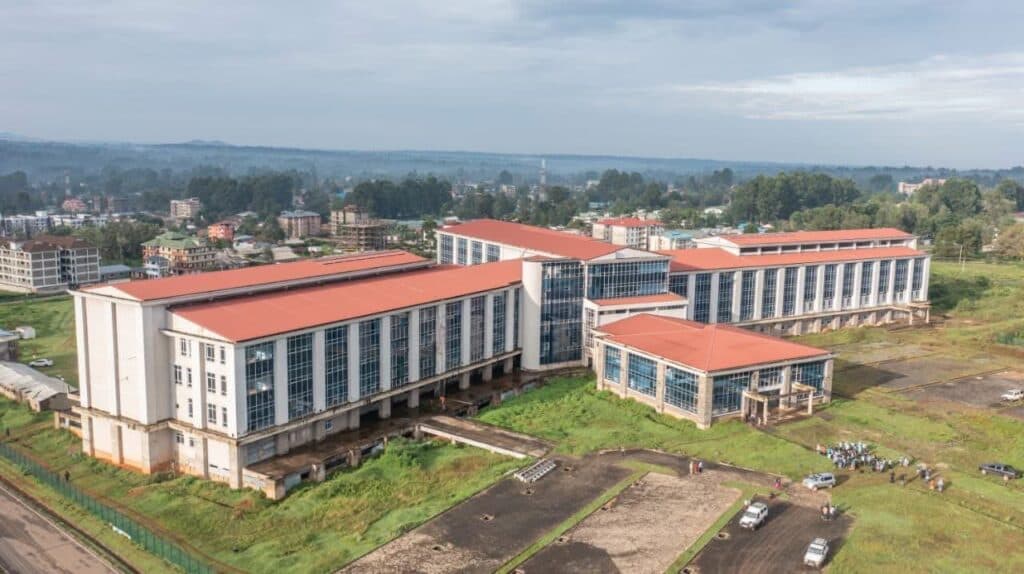We're loading the full news article for you. This includes the article content, images, author information, and related articles.
The national government's intervention aims to deliver Western Kenya's first Level 6 hospital within 10 months, a move set to decongest regional facilities and anchor universal healthcare goals.

The national government has taken over the completion of the Kakamega Teaching and Referral Hospital, allocating KSh 1 billion to finish the long-stalled project. During an inspection tour on Sunday, 2nd November 2025, President William Ruto announced a 10-month deadline for the contractor to finalize the facility and upgrade it to a Level 6 national referral hospital.
"I have told Governor Fernandes Barasa that because this is a big facility, he should leave it to me to complete so that the people of Kakamega can have access to a Level Six hospital," President Ruto stated, signaling a direct intervention to accelerate the project. The move is positioned as a strategic push to enhance specialized healthcare access for residents of Kakamega, Vihiga, Bungoma, and Busia counties, who have historically traveled to Moi Teaching and Referral Hospital (MTRH) in Eldoret or facilities in Nairobi for advanced medical care.
Initiated in 2016 under the administration of former Governor Wycliffe Oparanya, the ambitious 750-bed hospital was envisioned as a flagship project to transform regional healthcare. The total cost was estimated at over KSh 6 billion, planned in multiple phases. However, the project has faced significant delays for nearly a decade, primarily due to funding constraints and unpaid dues to the contractor. In February 2021, the contractor, China Railway Jiangsu Engineering, halted work citing pending bills of nearly KSh 500 million, leaving the multi-billion shilling facility in limbo. The delays recently prompted an inspection by the Senate's Standing Committee on Devolution and Intergovernmental Relations in October 2025 to investigate the nine-year incompletion.
The hospital's elevation to a Level 6 facility places it at the apex of Kenya's healthcare tier system, alongside institutions like Kenyatta National Hospital. Such hospitals provide highly specialized services, including complex surgeries, oncology, and renal care, and serve as crucial training and research centers for medical professionals. The operationalization of the Kakamega hospital is expected to significantly decongest MTRH and Jaramogi Oginga Odinga Teaching & Referral Hospital, reducing patient referral distances and costs.
President Ruto's administration frames the takeover as integral to the Universal Health Coverage (UHC) agenda, aiming to decentralize specialized services and ensure equitable healthcare access nationwide. In his address, the President commended both former Governor Oparanya for his vision and current Governor Barasa for his commitment to continuing the project, emphasizing the continuity of governance. "Government is a continuous enterprise. Projects do not belong to individuals; they belong to the people," Ruto remarked.
Beyond its healthcare implications, the project carries significant economic potential for Kakamega County. President Ruto directed the contractor to employ over 1,000 local youth to fast-track the final construction phase, providing a much-needed employment boost. Once operational, the hospital is projected to become a major employer and a hub for medical tourism and related economic activities in the region. Governor Barasa affirmed his county's commitment to collaborating with the national government, noting the project will be a game-changer for the region's economy and residents' livelihoods.
The President was accompanied by a host of national and local leaders, including Prime Cabinet Secretary Musalia Mudavadi and Cabinet Secretary Wycliffe Oparanya, underscoring a unified political front for the project's revival. The focus now shifts to the contractor to meet the ambitious 10-month timeline, a critical test for the new partnership between the county and national governments.
Keep the conversation in one place—threads here stay linked to the story and in the forums.
Other hot threads
E-sports and Gaming Community in Kenya
Active 7 months ago
Popular Recreational Activities Across Counties
Active 7 months ago
The Role of Technology in Modern Agriculture (AgriTech)
Active 7 months ago
Investing in Youth Sports Development Programs
Active 7 months ago